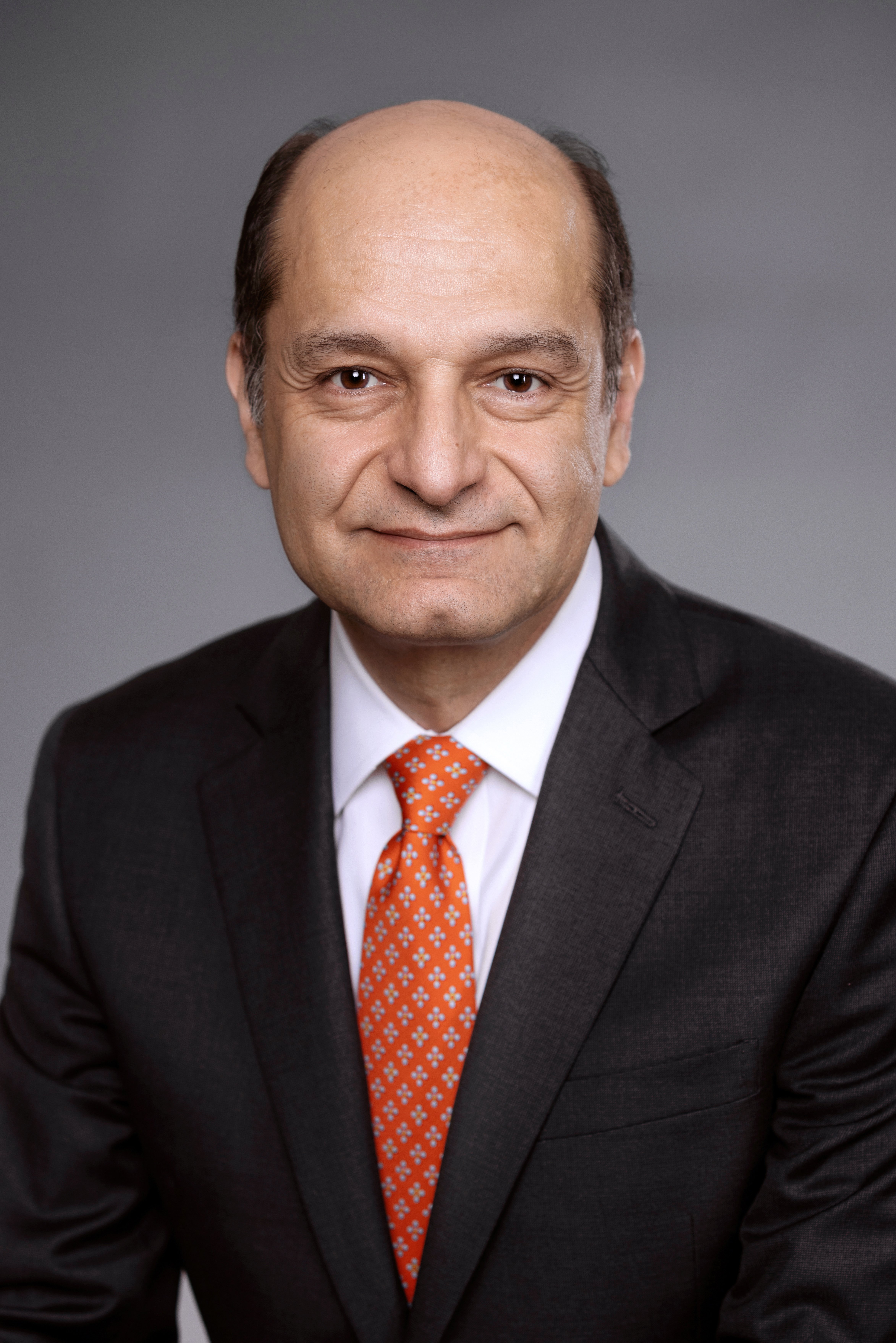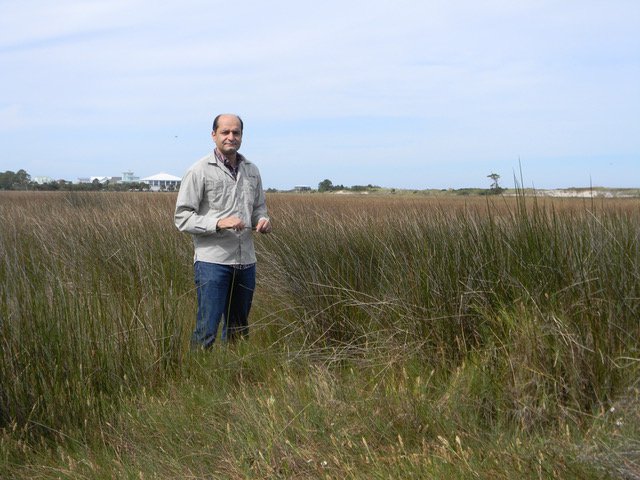“Working Together Toward a Grander Vision”
College of Arts and Sciences Dean Behzad Mortazavi looks forward to helping unite faculty and students across the humanities and STEM disciplines to address the complex challenges facing our world today.

While serving as a program director for the National Science Foundation in 2014 and 2015, College of Arts and Sciences (A&S) Dean Behzad Mortazavi worked on a team that processed and managed incoming proposals. Among the hundreds that came across his team’s desk, he came back often to the applications submitted by researchers at Syracuse University.
“What really stood out was the quality of the proposals,” says Mortazavi, who was appointed Dean of A&S in July 2023 after 15 years as a professor at the University of Alabama (UA). “Since then, some of the proposals that I had a hand in funding kept bringing my attention back to Syracuse to see how those projects turned out. When I was alerted that there was an opening for dean of the College of Arts and Sciences, I saw an opportunity to be part of an institution that was clearly on the rise.”
Mortazavi comes to A&S with extensive higher education leadership experience. He was most recently chair of the Department of Biological Sciences in UA’s College of Arts and Sciences. Among his accomplishments, he structured the department’s fundraising campaign and implemented initiatives spanning faculty retention, strategic planning, and diversity, equity and inclusion (DEI). During his tenure as chair, Mortazavi also hired 19 faculty, cultivated relationships with donors, established new endowments in the department and steered the department through a two-year strategic planning process.
In his research, Mortazavi specializes in biogeochemistry, which is the study of the chemical, geological and biological processes and reactions that govern the composition of and changes to the natural environment. Specifically, he explores the impact of urbanization and climate change on watersheds.
We recently sat down with Mortazavi to learn more about his research, what drew him to Syracuse and his vision for A&S.
Can you talk a bit about your research in biological oceanography, and what it entails?
I finished my master’s in marine ecology in Paris in 1992 and I came to Florida State to the Department of Oceanography to do my Ph.D. My dissertation was on how changes in river flow would impact a nearshore marine system. The Apalachicola River, with its watersheds located in Florida, Alabama and Georgia, is the third largest river in the northern Gulf of Mexico. It brings a lot of nutrients and freshwater into Apalachicola Bay (Florida).
In the early 1990s, Atlanta realized that they were going to run out of their freshwater, and they wanted to withhold water from that river that would ultimately come down to Florida and flow out into the Gulf of Mexico. At the outflow of this river, there's a very productive estuary known in the past for producing about 90% of the oyster harvest in Florida. There were concerns that changing the water flow into this system would impact the productivity of the bay. I worked with physical and chemical oceanographers to determine how changes in hydrology and nutrient delivery could impact the productivity of the bay.
How did your research evolve from there?
I got hired at UA in 2008 because I had worked in marine and terrestrial ecosystems in the few years prior, so I could speak the lingo between terrestrial and marine researchers. I connected dots between what was happening at the Dauphin Island Sea Lab on the coast and on the main campus, which is in Tuscaloosa hundreds of miles away. I started my tenure track position there, focusing on nearshore coastal processes and how groundwater and stressors that exist in the environment, like heat waves, could really impact the nearshore marine systems. We're losing around 1% marsh area per year on the Alabama coast and that rate of loss matches the global average. It is important to understand the implications and causes of this since these are nursery grounds for many commercially important fish as well as sites of nitrogen removal.

Dean Mortazavi conducting research at a marsh on Dauphin Island, Alabama.
Can you briefly describe your current work with nitrogen cycling?
Nitrogen is a nutrient, and generally a limiting nutrient in ecosystems, meaning it controls levels of productivity in ecosystems. Therefore, it's critical to identify what shortages in nitrogen and excess nitrogen will do to a system, which has been my area of research interest. During its cycle, nitrogen travels through living and non-living systems. If this balance is disrupted, ecosystems can be thrown off. Along the coast and in some lakes here in New York, we have harmful algal blooms and part of that has to do with too much nitrogen and phosphorus in these systems.
How does climate change factor into this equation?
Our most recent funding, through the Department of Energy and in collaboration with colleagues at the Pacific Northwest National Lab, looks at how changes in flow will impact nitrogen cycling in a watershed that's located in Tuscaloosa, Alabama, a representative site for many low relief watersheds in the southern U.S. This is important to understand because climate change is causing more extreme events like droughts and floods. We're working to determine how frequency and magnitude of floods in these watersheds with intermittent streams are impacting their capacity to process nitrogen and carbon. We are going to generate models that will help us predict ecosystem changes resulting from climate variability in the decades to come.
How can this issue be addressed?
I think the trajectory we are on right now is very concerning. What we're expecting is rising temperatures and rising CO2, and unless we manage to reduce emissions globally, what we're going to see is higher temperatures and more extreme events. Our goal is to try to understand how those climate change factors really impact the ecosystems and then bring that awareness back to the public, as well as to people in power who can make the decisions in terms of protecting our natural resources. This is where collaborations between humanists and scientists are vital. The Environmental Storytelling Series of Central New York is a great example of how this can be achieved: by uniting faculty, students and members of the community across disciplines to confront the climate crisis together, locally.
What drew you to Syracuse University?
Like I mentioned, during my time as program director at NSF, I got acquainted with the quality of the research that was being done at Syracuse. The University also had, from what I could tell, a very successful implementation of the strategic plan (of 2015) that had led to a lot of hires. I saw the success of their fundraising campaign that significantly increased their endowments. The diversity of the campus and focus on international programs also drew me in and once I met with the faculty and administrators it really solidified my impression of Syracuse in terms of being a forward-thinking institution that is having a great impact.
What are some of the unique strengths of A&S that you have noticed during your time here so far?
What stands out to me is the true dedication to the liberal arts education and the commitment by each department in making sure our students are part of the community and that they’re prepared to tackle the complex issues facing our world. I am impressed with the unwavering commitment of our faculty and students in addressing challenges such as climate change, social injustice, and disease—and also their focus to bring more hope and humanity to the world through things like literature, poetry and intercultural engagement. Through our centers, institutes and research groups like the Community Folk Art Center, Engaged Humanities Network, and Gravitational Wave Group, students are building community and pursuing research, creative work and service learning that contributes both to their education and the public good.
What is one of your major goals in the coming months?
The first thing I plan to do is listen and get acquainted with everything that’s happening in A&S. My focus is going to be on achieving academic excellence in all areas, and the details of that will emerge as I learn more about the strengths of the College to see how we can co-create a plan that will enable our faculty, students and staff to achieve even more.
How do you see the sciences and humanities working together to address contemporary ecological health and social challenges?
Humanity has become such a big component of ecological change. There was just a recent research article in Geophysical Research Letters stating that the groundwater we’ve withdrawn from Earth has been so great that the tilt of the planet has shifted, so humans are a massive force in how the planet is changing. I feel like interdisciplinary work and collaborations between scientists and humanists are going to be important because it will shed light on how we are agents of change. Humanities disciplines can lead us to seeing ways to change people’s hearts and minds and ultimately improve our world.
What are you most excited to accomplish as Dean?
In the coming months I’ll be getting to know faculty, students and staff across campus, and I look forward to building relationships and finding opportunities where we can all come together as a college and define the kind of impact we want to have going forward. As the University launches a new Academic Strategic Plan (ASP), the College is well positioned to align with its areas of distinctive excellence. For example, our faculty and students in creative writing are contributing to human thriving by bringing hope and empathy to people through their literary works and related community projects, while STEM researchers are at the cutting-edge of emerging technologies such as quantum computing, protein engineering, computational genomics, machine learning and gravitational-wave detection.
What I value is teamwork, and I would like to facilitate a lot of teams on campus that are going to work towards a grander vision that maybe they wouldn't think about if they were just working individually in silos.
Can you speak to the significance of diversity on campus?
It's important for students to have role models in terms of graduate students who they could identify with that are not too far in life from where they are. Recruiting underrepresented graduate students and faculty is critical, not only in terms of race, but in all aspects of diversity, so that our students feel a true sense of belonging. Evidence shows over and over that diverse teams are more creative. I think that diversity helps us learn better, too.
What do you think is central to maintaining a contemporary liberal arts experience for today’s students?
When I look at the national statistics, people on average change jobs around 12 times during their career. The question in the back of my mind has always been, what career is it that we're preparing these students for when we have a hard time even predicting what the job market is going to look like in 10 years? I feel that the liberal arts education is really about equipping our students with critical thinking skills and problem-solving skills that no matter where their future takes them, they'll feel prepared to tackle the problems that they might face in their career or the choices they'll have to make.
Being able to write clearly, speak persuasively and think creatively are assets transferable to any job market. A historian that then goes on to become a lawyer will be much better prepared compared to people who might have had a more straightforward path because now they have a perspective that is far more enriching to them thanks to the broad array of experiences and disciplines available in the liberal arts, not to mention the unique interdisciplinary programs at A&S. The liberal arts are how we are preparing students for a lifetime of careers.
